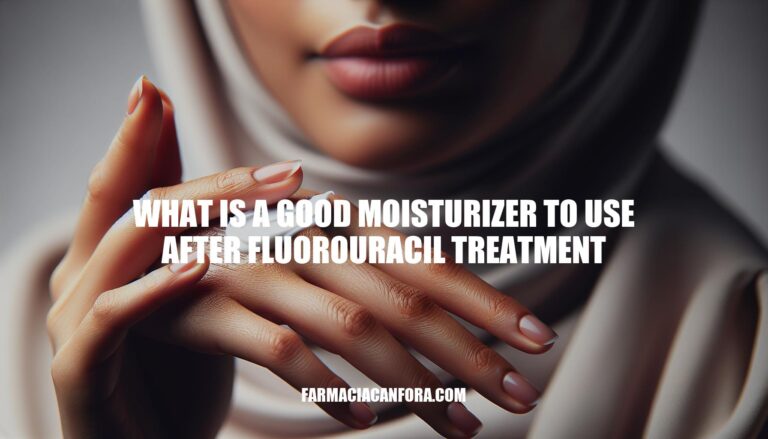


After fluorouracil treatment, finding a good moisturizer is crucial for skin recovery. Post-treatment, patients often face issues like dryness, redness, irritation, and peeling. A suitable moisturizer helps soothe these symptoms, promotes healing, and protects the newly sensitive skin.
Fluorouracil (5-FU) is a topical chemotherapy agent used to treat skin cancer and precancerous skin conditions. It works by targeting and destroying abnormal skin cells.
Purpose: The main goal is to eliminate cancerous or potentially cancerous cells on the skin.
Typical Side Effects: Common skin reactions include redness, burning, pain, swelling, and dryness. These side effects can be quite uncomfortable, which is why using a good moisturizer is essential to soothe and protect the skin.
Here are the specific qualities that make a moisturizer suitable for use after fluorouracil treatment:
These qualities ensure the moisturizer supports the healing process and maintains skin comfort and health.
Here are several recommended moisturizers to use after fluorouracil treatment, along with their benefits and why they are effective:
Vanicream Lite Lotion
Aquaphor Healing Ointment
Cetaphil Moisturizing Cream
Vaseline (Petroleum Jelly)
Eucerin Advanced Repair Cream
These moisturizers are effective because they help to hydrate, protect, and soothe the skin, which is crucial after the irritation and dryness caused by fluorouracil treatment.
Here are some practical tips for applying moisturizer after fluorouracil treatment:
These steps should help soothe your skin and maximize the effectiveness of the moisturizer.
After fluorouracil treatment, finding a suitable moisturizer is crucial for skin recovery. A good moisturizer helps soothe symptoms like dryness, redness, irritation, and peeling, promotes healing, and protects sensitive skin.
Look for a hypoallergenic, fragrance-free, non-comedogenic moisturizer with long-lasting hydration, gentle ingredients, soothing properties, and barrier protection. Recommended moisturizers include:
Apply the moisturizer at least 2 hours after treatment, choose a gentle fragrance-free option, cleanse gently, apply generously, massage gently, and reapply as needed to maximize effectiveness and promote skin comfort and health.